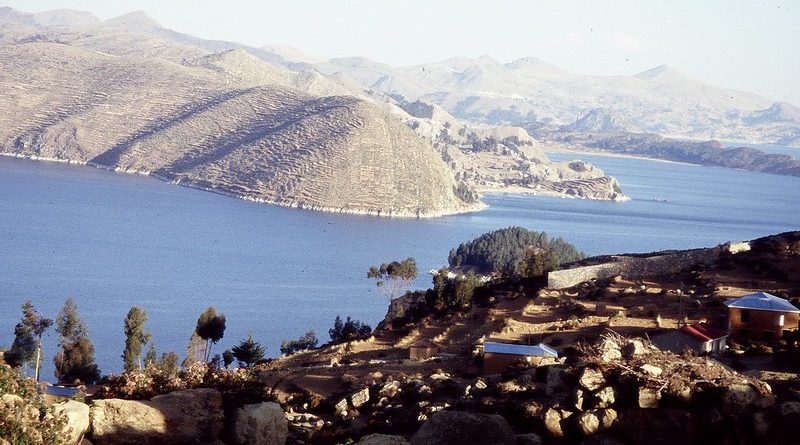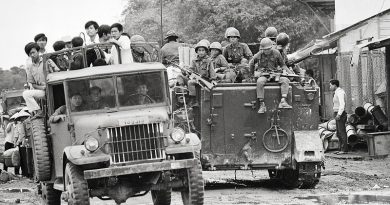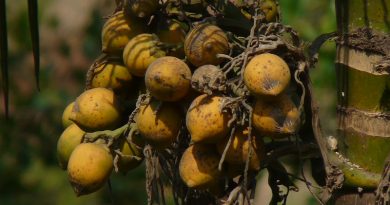Journey Guide: Across Bolivia – From the Pantanal to the Pacific
Our Tough Trains episode travels from the Pantanal in Brazil to the Pacific coast in Chile, but mainly passes through Bolivia.
The Pantanal is one of the largest, most intact and biologically diverse environments on the entire planet…the drying remains of an ancient inland sea called the Xaraés. The Xaraes began to dry out, along with the Amazon Sea, 65 million years ago.
Bolivia is one of Latin America’s most beautiful countries, but it’s also one of its poorest. A landlocked country of high altitude plains, mountains, deserts and grasslands, the challenge for Bolivia has been to gets its precious natural resources out of the country.
The railway line from Bolivia to the Pacific coast was built by Chile to compensate Bolivia for its loss of land during the 1879-1883 War of the Pacific. The idea behind the railway was to give Bolivia access to the sea for its exports. It cost Chile £2.75m to build – around £195m ($300m) in today’s money.
Climate
There is no ideal time to visit this part of South America – each season brings its own variations and you will find the climate varies extremely depending on which region you are in.
Altiplano (highlands) – Lake Titicaca, La Paz, Oruro, Cochabamba, Sucre, Potosí and Uyuni
During the months of June and July the climate varies from cool and humid to semi-arid. The average temperatures range from 15 to 27°C (60 – 80ºF) with the coldest occurring in the south-western portion of the Altiplano
The rest of the year tends to be dry and sunny, however nights can get chilly, dropping to just above 0 °C.
The unrelenting rainy season occurs between December and March seeing an average rainfall of around 200 mm (8″) to the south west and more than 800 mm (31″) over Lake Titicaca.
Top tip: If you like the mirror effect of water, this is the time to visit Uyuni’s salt flats.
Between April and September there is a chance of snow, especially to the north, but it is not very common.
Travel
Bolivia isn’t the easiest of South American countries to fly to. And it’s perhaps for that reason that it still remains one of the least developed for tourism.
American Airlines flies daily from Miami, USA to La Paz, Bolivia.
Bolivian Airlines has just started a direct flight from Madrid, Spain to Santa Cruz, Bolivia.
Most international flights fly into either La Paz or Santa Cruz.
Getting Around
Most people travel around by bus. It’s cheap and relatively comfortable. During the rainy season landslides can cause delays to your journey, adding on many more hours of being at a standstill on the road. But they usually come with TV screens showing 80’s action movies to keep you occupied!
Train travel is adventurous, but just don’t expect to get very far as much of the railway is in a state of disrepair. You must make sure you book tickets in advance too, otherwise you’ll find yourself without a seat. Without careful planning this can be disastrous… trains do not run every day.
There are also domestic flights available with Amaszonas and BOA. Just be careful with Sucre’s airport – due to its position geographically, inclement weather frequently means flights are cancelled or hugely delayed.
Practical Info
Currency
Bolivian Boliviano (BOB $), also known colloquially as pesos
Languages
Spanish is the main language spoken, but you will also find Quechua and Aymara spoken in the highlands
Don’t forget to pack
1. Mosquito repellent (& malaria tablets) 2. Spanish phrase book
Shop
Alpaca goods: they’re in vast quantities here – especially in la Paz – and the quality is great. Unless you go into a shop, you’ll be able to pick up a gorgeous poncho for around $10 USD.
What To Eat & Drink
Coca tea: Not only does this help with altitude sickness, but it’s a great alternative to green tea. And no – it’s not cocaine.
Quinoa: According to Bolivia’s president 2014 is the year of the Quinoa. It’s one of Bolivia’s biggest exports and it really is a super food. It’s cheap to both produce and buy and it is set to feed the world’s poor and cure global starvation. However, it’s global super food popularity has led to soaring prices with many of the growers and people indigenous to Bolivia unable to afford their staple grain.
Kalapurca: This is the soup of the miners in Potosi and one of Bolivia’s most famous dishes. It’s a thick soup made of maize, but made a name for itself because of the hot rock that makes the soup around it bubble like an erupting volcano. It’s as tasty as it is interesting… and it’s totally a local speciality. The most famous is from Dona Eugenia in Potosi.
Chicken & Chips: Not exactly haute cuisine, but this is Bolivia’s staple food if you’re travelling on a low budget. Most meals come with both chips & rice, so great if you’re loading up with carbs before a trek. Not so great if you’re trying to avoid them.
Itinerary
Zay’s journey starts near Corumba in the Brazilian Pantanal wetlands area, from where he jumps on the infamous ‘death train’ to Santa Cruz in Bolivia.
He then travels from Sucre to Potosi, the highest city in the world by a Bolivian specialty – a bus-train.
After lending a helping hand in the silver mines of Potosi Zay hitches a lift on a freight train that is carrying vital minerals to the Chilean border near Uyuni.
He visits the lithium plant in Uyuni’s salt flats before taking a passenger train north to La Paz. From there he takes another bus-train from nearby Viacha to the Chilean border of Charana.
Zay’s final ride is a freight train that takes him all the way to the Chilean port of Arica.
Must See, Do & Buy
1. Uyuni Salt Flats
2. Mine tour in Potosi
3. Witches market in La Paz
4. Walk around & get lost in the craziness of La Paz (but make sure you have the business card from your hotel with you first!)
5. Pantanal (yes – Bolivia has part of it too)
6. Jesuit mission trail in the east
7. Dinosaur footprints & beautiful colonial architecture in Sucre
8. Alpaca goods: they’re in vast quantities here – especially in la Paz – and the quality is great. Unless you go into a shop, you’ll be able to pick up a gorgeous poncho for around $10 USD.
Top Festivals & Events
1. FEB: Carnival – be prepared to get wet – whole country & Oruro in particular
2. MARCH: Pujillay festival – it’s a celebration of Bolivia’s victory over the Spanish, which led to the country’s independence. Tarabuco
3. JANUARY: Las Alasitas. More of a market than a festival, it goes on for a month, but it does kick off with dancing and celebrations to honour the god of abundance. La Paz.
4. MARCH/APRIL: Semana Santa – or Easter. There is a huge nation-wide celebration. Any pilgrimages usually end in Copacabana on Lake Titicaca.
5. FEB: Virgen de la Candelaria. Lots of folkloric dancing & celebrations. Mainly around Lake Titicaca & Copacabana.
6. MAY/ JUNE: El Gran Poder. This is now one of the largest festivals in La Paz in which thousands of local participate in folkloric dances through the streets.
7. AUGUST: Independence Day.
8. NOVEMBER: Dia de los Muertos. As in Mexico, Bolivians celebrate the Day of the Dead, visiting the graves of their dead relatives across the country. They set a place for the deceased at each meal.
9. DECEMBER: Navidad (Christmas). Much loved & hugely celebrated through the country. Some celebrations only die down at the end of January.




